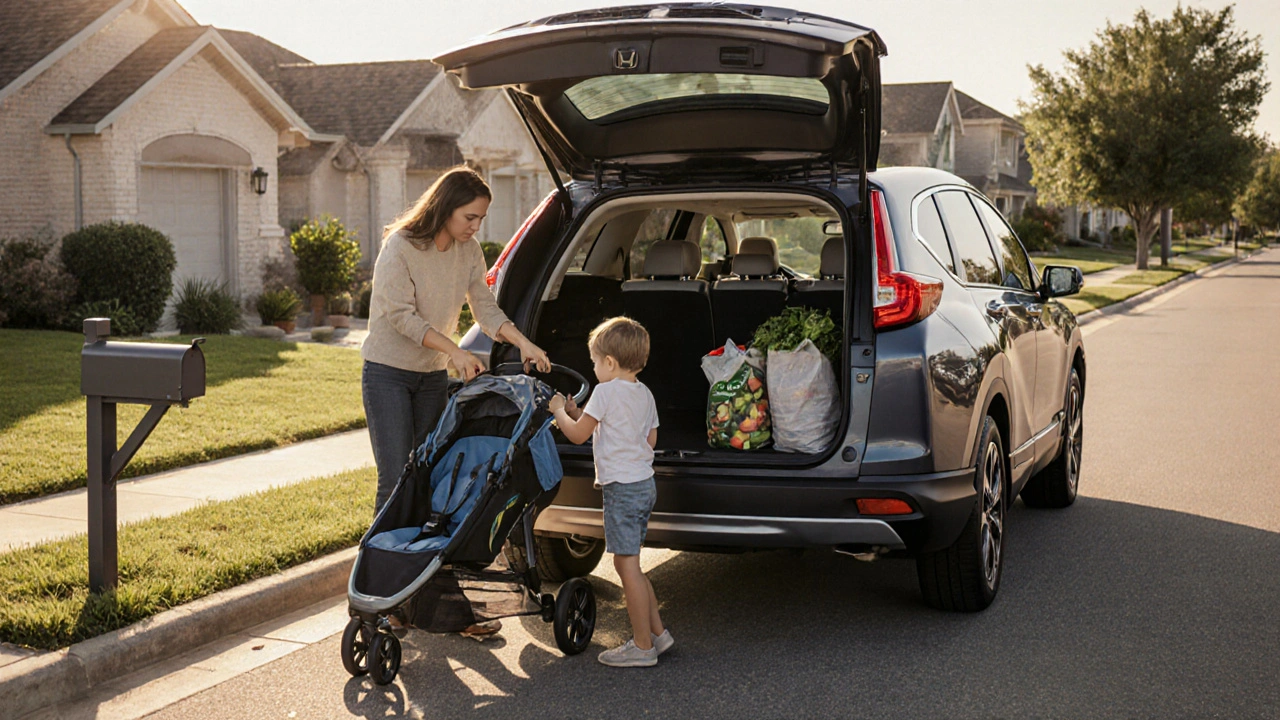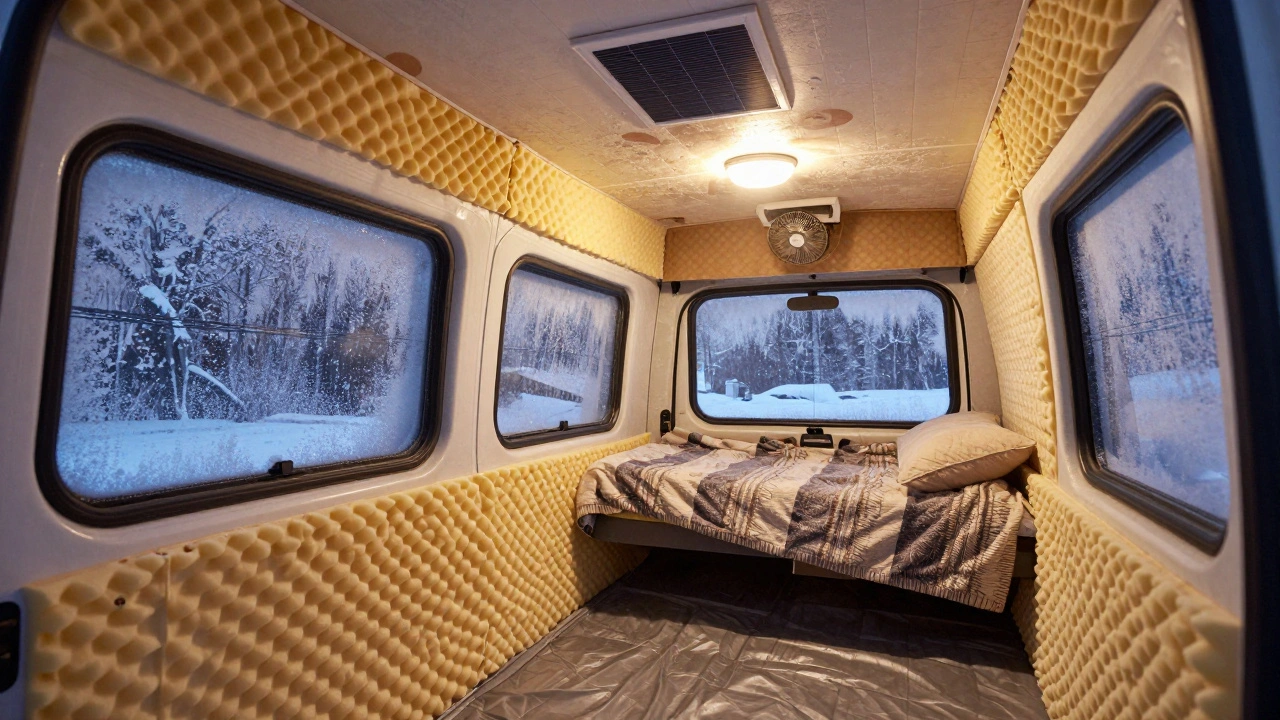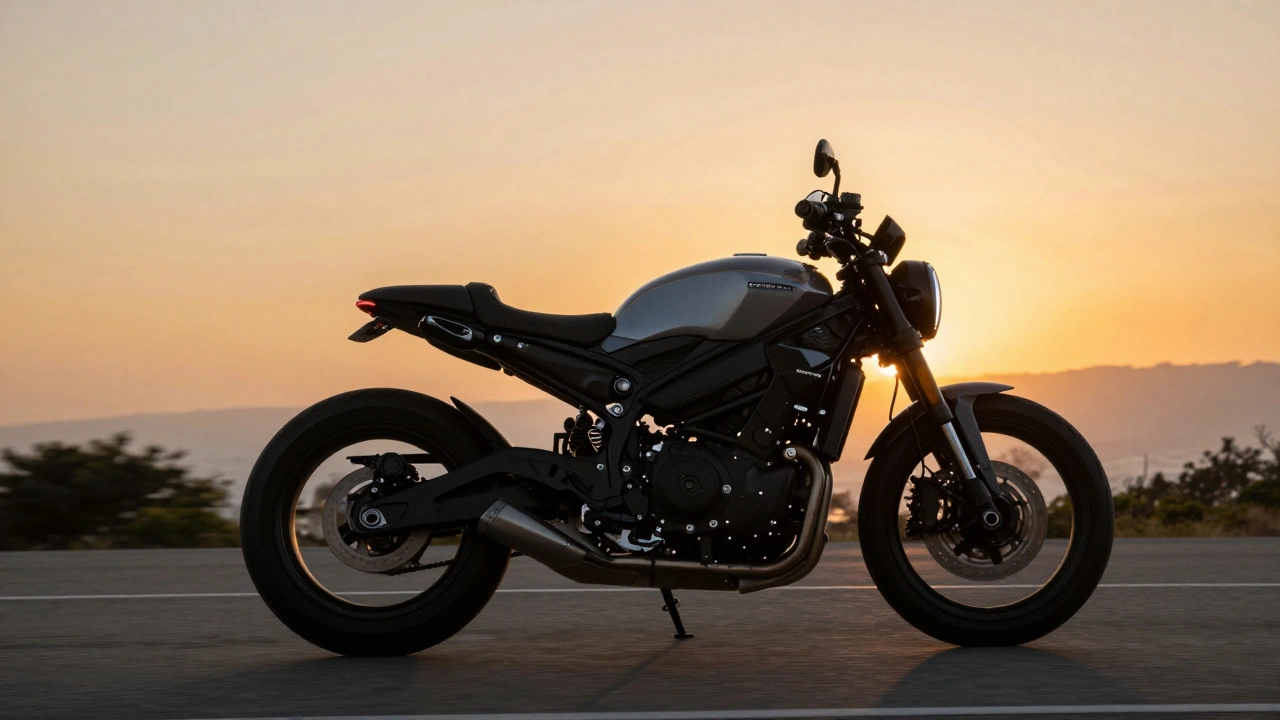When you’re shopping for an SUV, the biggest decision often isn’t about engine power or tech features-it’s about how many rows of seats you actually need. Two-row SUVs look sleek and feel sporty. Three-row SUVs promise room for the whole crew. But here’s the truth: picking one over the other isn’t just about how many kids you have. It’s about how you live, how you drive, and what you actually carry on a regular basis.
Two-Row SUVs: Less Space, More Flexibility
Two-row SUVs like the Honda CR-V, Toyota RAV4, or Ford Escape are built for people who don’t need to haul seven passengers every weekend. These vehicles typically seat five-two in front, three in back-and they’re designed with efficiency in mind. The average cargo space behind the rear seats? Around 35 to 40 cubic feet. That’s enough for two large suitcases, a stroller, and a few grocery bags. Fold the rear seats down, and you’re looking at 65 to 75 cubic feet-plenty for a weekend trip or a DIY project haul.
Why do people choose two-row SUVs? Because they’re easier to park, cheaper to insure, and get better gas mileage. In real-world driving, a two-row SUV like the Mazda CX-5 averages about 28 mpg combined. That’s nearly 5 mpg better than most three-row models. Over a year, that adds up to hundreds of dollars in fuel savings.
But here’s what most buyers miss: the rear seats in two-row SUVs are often more comfortable. With no third row squeezing in behind, the second row has more legroom and recline. If you’ve ever tried to buckle a toddler into a car seat while a stranger’s knees are pressing into your head from the row behind, you know why this matters.
Three-Row SUVs: Built for Bigger Families
Three-row SUVs-think the Hyundai Palisade, Kia Telluride, or Chevrolet Traverse-are made for families who regularly transport seven or eight people. These vehicles have a third row, usually tucked under the cargo floor, that’s meant for kids or short trips. But don’t be fooled: the third row isn’t a luxury. It’s a compromise.
Most third rows are tight. Adults over 5’8” will feel cramped. Legroom is often less than 30 inches, and headroom can feel like a low ceiling. Even the best third rows, like the ones in the Kia Telluride or Toyota Highlander, are only really comfortable for kids under 12. If you’re planning to use that third row regularly for school runs or road trips, you need to test it with your actual kids-or your parents-before buying.
Cargo space is where the tradeoff gets real. Behind the third row, most three-row SUVs offer only 15 to 20 cubic feet. That’s less than a full-size refrigerator. Fold the third row, and you get 40 to 50 cubic feet-still less than a two-row SUV with its seats down. Only when you fold both the second and third rows do you hit 80+ cubic feet, which is great for moving furniture… if you’re willing to sacrifice all seating.
Seating Needs: Who’s Actually Riding With You?
Ask yourself this: how often do you really need seven seats?
If you’re a family of four and your parents visit once a year for Thanksgiving, you don’t need a three-row SUV. You need a two-row SUV with a roof rack for extra gear. If you’re a single parent with three kids under 10 and you carpool for soccer practice every Tuesday and Thursday, then yes-three rows make sense.
But here’s the thing most dealerships won’t tell you: many families who buy three-row SUVs rarely use the third row. A 2024 J.D. Power study found that 62% of three-row SUV owners say they use the third row less than once a month. And 27% say they’ve never had anyone sit there. That’s a lot of wasted space and extra cost.
Think about your typical rides. Do you ever have more than five people in the car? If the answer is “only during holidays,” then you’re paying for capacity you rarely use. That means higher monthly payments, higher insurance premiums, and higher fuel bills.

Cargo Tradeoffs: What Fits and What Doesn’t
Cargo space isn’t just about cubic feet-it’s about shape, accessibility, and usability.
Two-row SUVs have a flat, wide cargo floor. You can fit a 4x8 sheet of plywood, a full-sized stroller, or a kayak strapped to a roof rack without hassle. The opening is wide, the floor is low, and the liftgate opens high enough for easy loading.
Three-row SUVs? The cargo floor is often higher because of the third-row mechanism underneath. The opening is narrower. And if the third row is up, you’re stuck with a tiny space that won’t fit a single large suitcase standing upright. Even when folded, the cargo area is sometimes obstructed by bulky seat tracks or hidden storage bins.
Real-world example: I took a friend’s 2025 Ford Explorer (three-row) to pick up a new grill. The grill box was 36 inches wide. The cargo opening was 32 inches. I had to tilt it at an angle, struggle to get it in, and then remove the third-row seats just to make it fit. I could’ve done that in a two-row Hyundai Santa Fe in under a minute.
Cost Comparison: What You’re Really Paying For
Let’s break down the numbers.
A 2025 Honda CR-V (two-row) starts at $31,000. The 2025 Honda Pilot (three-row) starts at $39,500. That’s an $8,500 difference right out of the gate. Over five years, the Pilot will cost you about $1,200 more in fuel, $800 more in insurance, and $1,500 more in depreciation. That’s over $12,000 extra just to have seats you might never use.
And if you’re leasing? That $8,500 gap becomes $200-$250 extra per month. That’s a full Netflix subscription, a gym membership, or a monthly grocery boost-gone just to accommodate a third row.
Two-row SUVs also tend to hold their value better. According to Kelley Blue Book, two-row SUVs retain about 58% of their value after five years. Three-row SUVs? Around 52%. That’s a $4,000 difference on a $30,000 vehicle.

When a Three-Row SUV Makes Sense
There are times when the third row isn’t just nice-it’s necessary.
- You have three or more kids under 13 and no access to a second vehicle.
- You frequently transport extended family-grandparents, aunts, cousins-for weekend trips.
- You run a small family business and need to haul equipment and people together.
- You live in a rural area where public transit doesn’t exist, and carpooling is your only option.
Even then, consider alternatives. A minivan like the Honda Odyssey offers more legroom in the third row, better fuel economy, and more cargo space than most three-row SUVs. And it’s often cheaper.
Final Decision: The Real Test
Here’s how to decide for real:
- Take your family to a dealership and sit in both types of SUVs-with your actual kids, your partner, and your dog.
- Try to load your typical cargo: stroller, groceries, backpacks, sports gear.
- Ask yourself: Do I *ever* need seven seats? Or am I just buying the idea of having them?
- Calculate the real cost difference over five years-not just the sticker price.
Most people who choose two-row SUVs don’t regret it. They’re happier with the fuel savings, the easier parking, and the more comfortable ride. Three-row SUV buyers often feel trapped by their own choice-lugging around extra weight and cost for a feature they rarely use.
If you’re not regularly hauling seven people, you don’t need a three-row SUV. You just need a better plan for the occasional ride.
Is a two-row SUV big enough for a family of four?
Yes, absolutely. A two-row SUV with five seats gives you plenty of room for two adults and two or three kids. Most models have enough cargo space for strollers, groceries, and weekend luggage. The only time you might struggle is if you regularly need to carry more than five people. Otherwise, a two-row SUV is ideal for most families.
Can adults sit comfortably in the third row of a three-row SUV?
Adults under 5’7" can manage short trips, but anything longer than 30 minutes gets uncomfortable. Most third rows are designed for kids or emergency use. Even in top models like the Kia Telluride or Hyundai Palisade, the legroom is tight, the headroom is limited, and the seat angle doesn’t recline much. It’s not a true seating option for daily adult use.
Do three-row SUVs cost more to insure?
Yes, typically by 10% to 20%. Three-row SUVs are heavier, more expensive to repair, and statistically more likely to be involved in accidents due to their size and higher center of gravity. Insurance companies also factor in the higher purchase price and replacement cost. A two-row SUV like the Toyota RAV4 usually costs $300-$500 less per year to insure than its three-row counterpart, the Highlander.
Which SUV has the most cargo space with all seats up?
Among three-row SUVs, the Chevrolet Traverse leads with 23 cubic feet behind the third row. But even that’s less than the 38 cubic feet you get in a two-row Hyundai Santa Fe with its seats up. If you need cargo space and don’t need seven seats, a two-row SUV is the smarter choice.
Should I consider a minivan instead of a three-row SUV?
Absolutely. Minivans like the Honda Odyssey, Toyota Sienna, or Kia Carnival offer more interior space, better fuel economy, sliding doors for tight parking, and more comfortable third rows than most SUVs. They’re cheaper to buy and insure, and they’re designed specifically for families. The only downside? They don’t look like SUVs. But if your priority is function over form, a minivan is the real winner.
Next Steps: What to Do Now
Don’t buy based on what looks cool or what the salesperson pushes. Test drive both types. Bring your family. Load your gear. Sit in the back. See how the third row feels after 15 minutes. Check the trunk with your stroller and your dog’s crate. Calculate the real cost difference over five years.
If you don’t need seven seats, you don’t need a three-row SUV. Save the money. Drive lighter. Live easier.






Anand Pandit
November 20, 2025 AT 10:55I bought a Honda CR-V last year and I swear it changed my life. No more worrying about gas prices, parking is a breeze, and the back seat is actually comfortable for my two kids. I used to think I needed a three-row until I realized I never used it anyway. Save the money, drive lighter.
Reshma Jose
November 22, 2025 AT 03:48My cousin bought a Telluride thinking it was perfect for family road trips. Turns out the third row is like sitting in a closet with the lights off. They ended up selling it after six months and got a Santa Fe. Best decision they ever made. Also, insurance was way lower.
rahul shrimali
November 22, 2025 AT 19:46Eka Prabha
November 23, 2025 AT 17:08Let’s be honest. The entire automotive industry is engineered to exploit middle-class delusions. You’re not buying utility-you’re buying social validation. The three-row SUV is a status symbol disguised as practicality. Dealerships know this. Insurance companies know this. Even the EPA knows this. Yet we keep falling for it. The cost differential isn’t just financial-it’s psychological. You’re paying for the illusion of abundance while sacrificing efficiency, safety, and environmental responsibility. This isn’t choice. It’s conditioning.
Bharat Patel
November 25, 2025 AT 05:27It’s funny how we equate space with success. A bigger car doesn’t make you a better parent, a better provider, or a better person. It just makes you pay more. I used to think having a three-row SUV meant I was doing right by my family. Turns out, what they really wanted was more time together-not more cubic feet. The CR-V gave me back hours on the road and dollars in my pocket. That’s the real luxury.
Bhagyashri Zokarkar
November 26, 2025 AT 19:21okay so i got a pilot bc i thought i needed it for my three kids and my mom and my dog and my sister and her two kids and my cousin who visits once a year but honestly the third row is like a torture chamber and i hate it and now i have to park farther away and i pay so much more for gas and insurance and i just want to cry sometimes because i feel so stupid for buying it and now i have to keep it for another three years because i cant afford to trade it in and i just wanna go back to my old corolla which was tiny but at least i could park it in my garage and not feel guilty every time i turned the key
Rakesh Dorwal
November 27, 2025 AT 23:22Why do people keep falling for this Western propaganda? SUVs are just oversized cars made to drain your wallet. In India, we know better-family rides together in compact cars, we don’t need to show off with American-sized garbage. Three-row SUVs are a scam designed to make you feel like you need more than you do. Stick to your Maruti or Hyundai Venue. You’ll thank yourself later.
Vishal Gaur
November 28, 2025 AT 17:50So i had a kia telluride for two years and honestly the third row is just a joke. My wife tried to sit back there once and said it felt like being in a coffin with no air. And the cargo space? Forget it. I tried to fit a stroller and a suitcase and a dog crate and i had to fold both rows just to get it in. Meanwhile my buddy has a rav4 and he just throws everything in like its nothing. Plus his fuel bill is like half mine. I sold it last month and got a santa fe. Best decision ever. Also the dealer tried to upsell me on extended warranty and i said no and saved like 2k. Dumb move buying that big thing.
Nikhil Gavhane
November 30, 2025 AT 12:54I used to think I needed a three-row until I took my kids to a dealership and had them sit in both. My seven-year-old said, 'Dad, the back of the big one feels like a closet.' My five-year-old just started giggling because he could stretch out in the CR-V. I realized then that comfort matters more than capacity. We got the two-row. No regrets. We even took a road trip last month and had more space than we needed.
Rajat Patil
December 1, 2025 AT 22:00It is worth considering that the decision between two-row and three-row SUVs often reflects deeper societal values regarding convenience, status, and perceived necessity. Many individuals purchase larger vehicles not out of practical need, but due to social influence and marketing narratives. A more thoughtful approach, grounded in actual usage patterns and long-term financial implications, may lead to more sustainable and personally satisfying choices. One does not require greater volume to provide greater care.